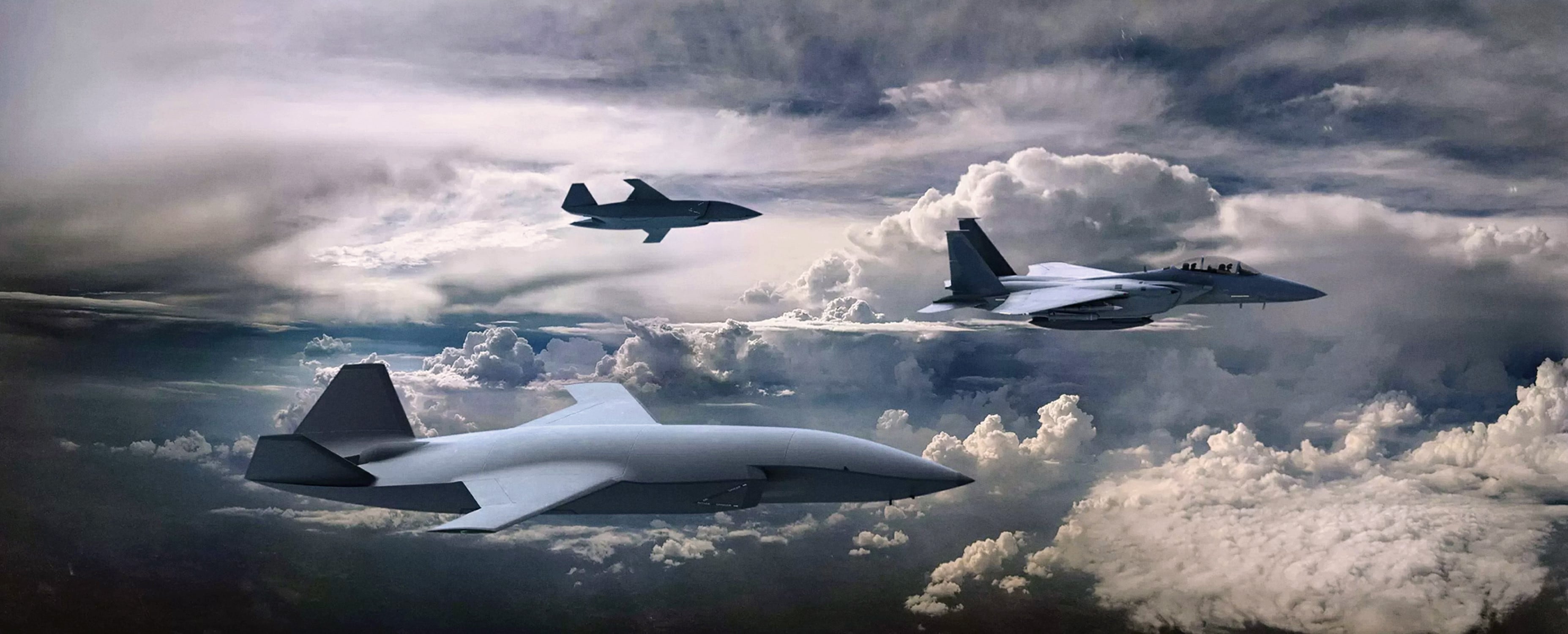AURORA, Colorado — The Air Force is ramping up plans for incorporating drone wingmen into its fleet, and envisions 1,000 of the so-called collaborative combat aircraft in service as it sketches out ideas.
Air Force Secretary Frank Kendall said Tuesday that the service will ask Congress for funding in the fiscal 2024 budget to move forward with the CCA program, as well as the Next Generation Air Dominance program of futuristic fighter aircraft, so it can map out how it will operate, organize and support these new systems.
In his keynote address at the Air and Space Force Association’s AFA Warfare Symposium in Aurora, Colorado, Tuesday, Kendall said he and Air Force Chief of Staff Gen. CQ Brown told planners to assume the service might acquire 1,000 CCAs. Under this model, the Air Force would acquire two CCAs for each of 200 NGAD platforms, and two for each of 300 F-35s, Kendall said.
Kendall cautioned those numbers aren’t likely to be what the Air Force’s inventory ends up tallying. Instead, he said, it’s a ballpark estimate to allow the service to estimate its basing needs, organizational structures, training and range requirements, and sustainment concepts.
“The CCAs will complement and enhance the performance of our crewed fighter force structure,” Kendall said. “CCAs will dramatically improve the performance of our crewed aircraft, and significantly reduce the risk to our pilots.”
Kendall has made adopting autonomous CCAs into the Air Force’s future fleet one of his top priorities as he seeks to update its fighter fleet to win a future war.
These drones could carry out a variety of missions, including striking targets, intelligence, surveillance and reconnaissance, or electronic warfare, Brown said in a February talk at the Brookings Institution.
The Air Force envisions these drones as being less expensive than traditional crewed aircraft, and in some cases being cheap enough that the service could afford to lose them in combat. This would allow the Air Force to send CCAs on riskier missions, and avoid putting human pilots in danger.
Kendall stressed in his speech that adopting drone wingmen will not mean the Air Force has fewer crewed fighters in its inventory. Instead, he said, CCAs can be thought of as remotely controlled versions of the targeting or electronic warfare pods or weapons that crewed aircraft now carry.
In a roundtable discussion with reporters at the conference, Kendall said the Air Force wants CCAs to cost a fraction of the F-35, which costs roughly $78 million per air frame in its 14th lot. He said affordability is a requirement for the program.
Kendall said the CCA program will be one of nearly 20 new or significantly ramped up programs in the upcoming budget request. About a dozen of those will be new starts that will require Congress’ approval, he said, and the rest are enhancements to already existing programs such as the Advanced Battle Management System.
Kendall said in September 2022 that he hopes the Air Force will hold a competition for CCAs in 2024, though details on that competition are scarce.
Brown said in another roundtable Tuesday that the Air Force has three lines of effort under way to develop CCAs: Developing the platform itself, developing the autonomous software that will fly the CCA, and figuring out how to organize, train, equip and supply the program.
All three of those efforts are under way “in parallel,” Brown said. The Air Force has brought in operators and maintainers to figure out questions such as how the CCAs would be directed and controlled during operations, he said.
Part of that work is figuring out how to design and mature the drone’s autonomous core, so a fighter pilot doesn’t get overwhelmed with the responsibility of directing and guiding the CCA, Brown said. That includes doing experiments on autonomy with the X-62A Variable In-flight Simulator Aircraft, or VISTA, a heavily modified F-16 fighter at Edwards Air Force Base in California
“There’s a number of ways to do this, whether it’s voice [commands] or touchscreen,” Brown said. “Just think about our day-to-day lives, and the autonomy we have. So the technology is there. It’s just how we bring this into our military applications.”
Stephen Losey is the air warfare reporter for Defense News. He previously covered leadership and personnel issues at Air Force Times, and the Pentagon, special operations and air warfare at Military.com. He has traveled to the Middle East to cover U.S. Air Force operations.





